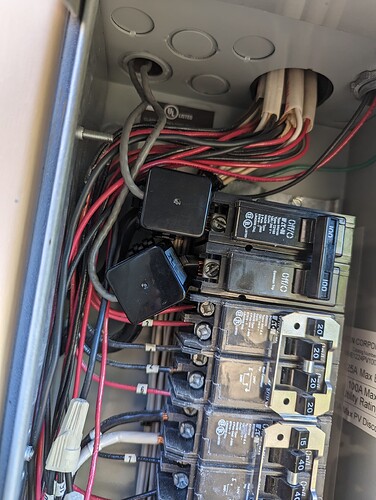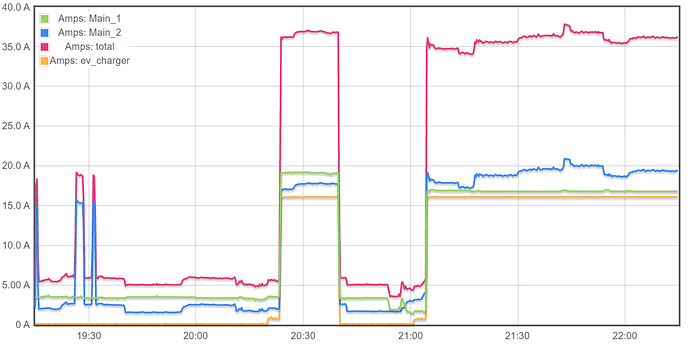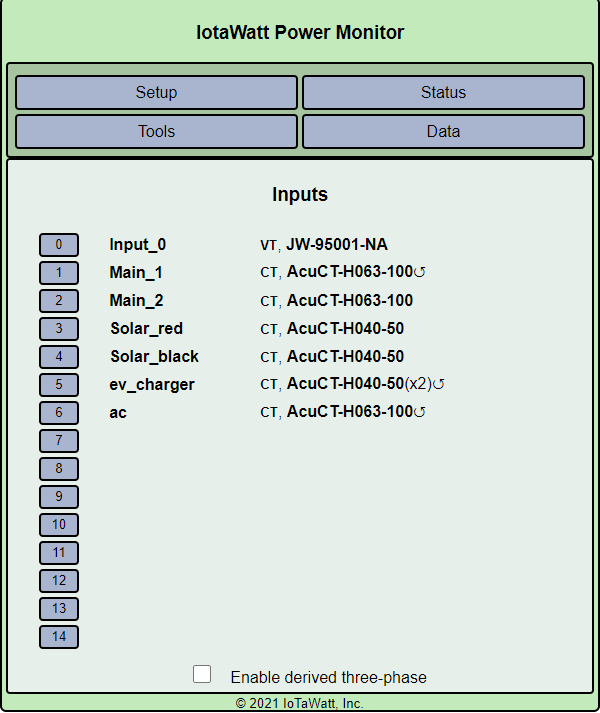It would be helpful if you read the docs on split-phase power. Specifically, the issue of reversing one of the mains is addressed. I see that you have checked the reverse box for Main_1. The docs will explain why.
Your panel is 100A. That means that each of the hot legs of the panel is limited to a maximum 100A. The potential (voltage), with respect to neutral on each hot leg is 120V.
When you use a 240V load, such as a EV charger, the current moves between the two hot legs for a total of 240V potential. 16A at 240V is 3,840 VA (Volt-Amps). When you use a 120V appliance, such as a refrigerator, the current moves between the corresponding hot leg and neutral.
As you move down your panel rows, the corresponding hot leg alternates. That’s why a double breaker creates a 240V load. The 120V loads are single breakers and the other conductor connects to the neutral bus.
In reality, while the 120V circuits all connect to the neutral bus, only the net difference between the L1 and L2 circuits travels back to the street. The rest conceptually moves seamlessly from L1 loads, to the neutral bus and then through the L2 loads. Effectively creating an aggregate 240V load.
To measure all of this 120V and 240V activity, we break it down into two 120V loads - the L1 and L2. We look at the mains current in each with respect to their 120V potential.
So, when you are using the EV charger, the one CT on the EV circuit is showing 16A, and when you “double” it, you are saying double the 120V reference voltage. You have 16A at 240V or 3,840 VA (Volt-Amperes). Meanwhile, each of the mains is also carrying that same 16A of current, but we are using the 120V reference for them. Each main is using 16A at 120V or 1,920 VA. Together they add up to 3,840 VA.
If you plot Watts, which is a function of current and voltage, you will see that the combined mains increase matches the EV charger load.
Now, applying this to your load shedding algorithm. Your limit is 100A per leg at the Mains. So, you need only look at each individual leg. The sum of the two has no bearing on the problem. You could be overloaded with 120A on L1 and 10A on L2. As a practical matter that wouldn’t happen, but you get the idea.
Now practically speaking, your EV charger is not a big load. Most hot water heaters use more power than that. In fact, unless you have many more big loads, I doubt you could get to 80A (The safe limit) on either leg. Try it. Crank everything up at once and look at the current on the mains.
Another consideration is you solar generation. If properly installed, the breaker should be fartest away from the mains in your panel. This is so that the total load on the panel main buss doesn’t exceed the rating. The grid can only supply 100A because of the mains, but your total load can be 100A plus the current generated by the solar inverter.
Believe it or not, this is a simplification of the situation. Total Amps used by a panel will not necessarily equal the sum of the Amps measured to each load. There is a concept called “reactive power” where current can conceptually be shared between your loads. It all has to do with power factor. Suffice to say that measuring each of the mains is the best practical way to determine total load, and most importantly if your solution is to a non-existing problem.


